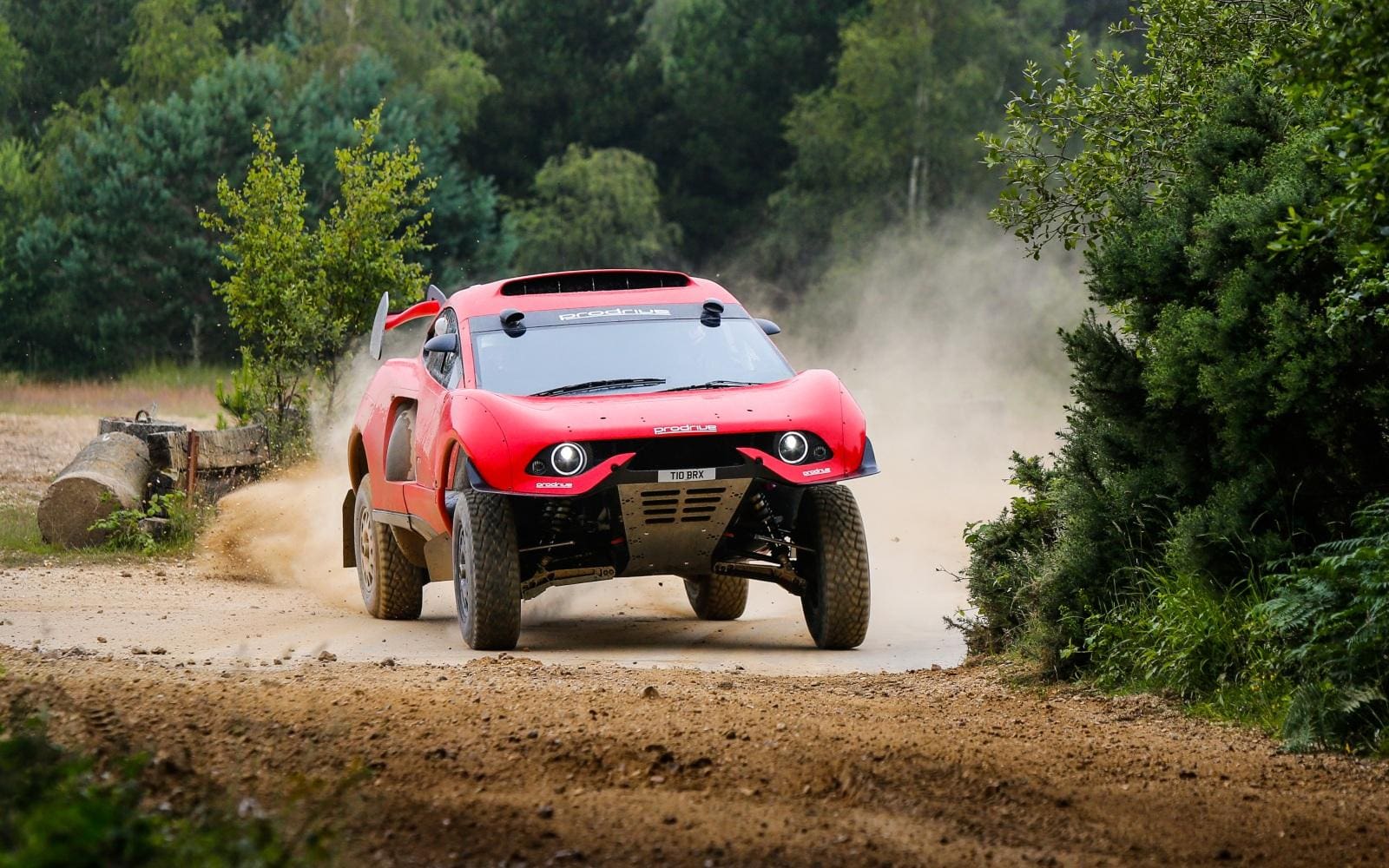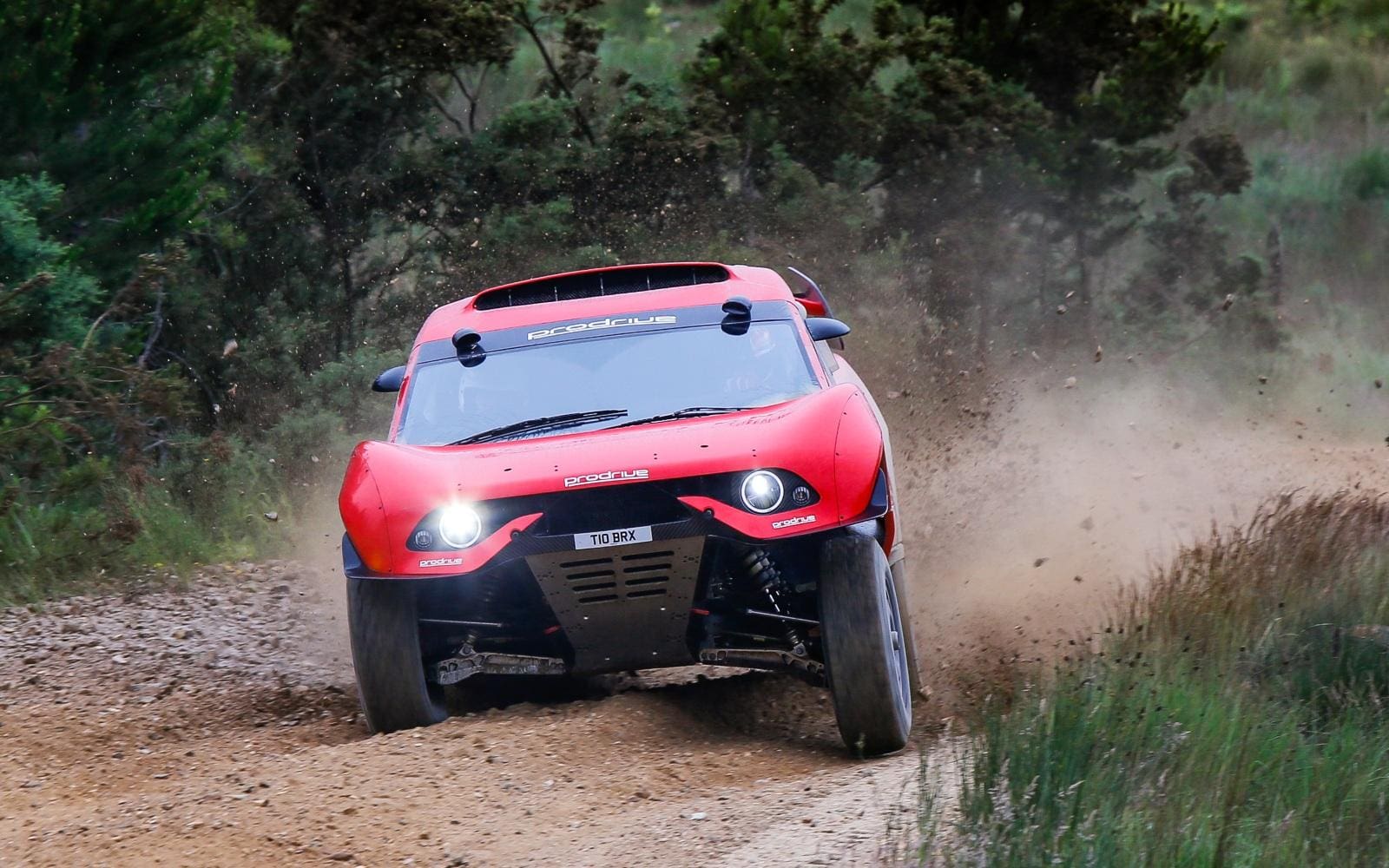
Prodrive BRX Hunter:The world’s first £1 million SUV
The all-new, British-built Prodrive BRX Hunter trades ultimate luxury for extreme off-road performance
The Rolls-Royce Cullinan and Bentley Bentayga are two of the most expensive SUVs a lot of money can buy. However, all that changed with the Prodrive BRX Hunter: a wild-child rival crashing onto the forecourt with a seven-figure price tag.
The all-new, British-built Hunter has been developed by motorsport company Prodrive and is the most outrageous road car in decades. Not since the Lamborghini LM002 of the 1980s has anything like this madcap been allowed to tread tarmac – which will almost certainly help it garner instant popularity.
Styled by former Jaguar design guru, Ian Callum, Hunter is based on the car driven to fifth place by Nani Roma at last year’s gruelling Dakar Rally. It may look like a jacked-up dune buggy but this is a highly sophisticated machine, capable of covering vast distances across any terrain. The street-legal version – which began deliveries in January 2022 – has increased power and creates a niche for more dirt-focused 4x4s in a booming, luxury SUV sector.
The car is the brainchild of Prodrive founder and CEO, David Richards. Richards won the World Rally Championship as a co-driver in 1981, alongside Finnish legend, Ari Vatanen. Back then they competed in a modest Ford Escort.

A former chairman of Aston Martin, Richards once headed up the Benetton F1 team and currently runs Lewis Hamilton’s all-electric X44 Extreme E operation. This year’s Dakar Rally was Prodrive’s first-ever entry – previously it won three World Rally Championships with the likes of Richard Burns and Colin McRae. “As we developed the Dakar vehicle, I thought it had the potential to make a sensational road car, too. This is a hypercar that isn’t designed for the race track. It will be the Ferrari of the desert.”
Richards says the two-seat road version is almost identical to the rally car, save for a few key changes. “It’s 300mm wider, with larger tyres and even more power. There are no steps into the cabin and the seats won’t be on slide adjusters. If you can’t manoeuvre yourself in then you probably shouldn’t be driving the car.”

The first Hunter road car was still under wraps at the time of our test drive, so I’m strapped into Roma’s Dakar version. Powered by a heavily-modified Ford EcoBoost 3.5-litre V6 twin-turbo engine, the competition car is restricted to 400hp and 516 lb-ft of torque to meet strict FIA regulations.
However, without race restrictions, the street version could be increased to 650hp, with a massive 400mm of suspension travel – as well as the option of a 500-litre fuel tank for epic adventures to the remotest corners of the planet.
Whilst strapped to a carbon-fibre seat with a six-point rally harness, the short, stubby bonnet and low windscreen allow a better view of the terrain ahead, while a camera system is essential for any reversing.

A Sadev, six-speed sequential gearshift is far simpler to negotiate than I expected, with front, centre and rear differentials giving the Hunter incredible traction. Based on a high-strength, tubular steel chassis with carbon-fibre bodywork, the engine is cleverly situated under the windscreen. The mid-mount allows for a better balanced car, vital when hurtling across rough terrain at high speed.
It’s relatively basic underneath the steel spaceframe, with no adjustable adaptive dampers to iron out the bumps. The road version features paddle-shifters on the steering column, like most high-performance cars. A spare wheel is located in each rear flank, with another set forward of the engine under the bonnet. Fuel is stored behind the cockpit – a smaller, 200-litre tank is also available but will still cost hundreds of pounds to fill.

On a narrow, tree-lined course in Dorset, I rarely change out of third gear, while the four-wheel drive Hunter crashes down ruts and leaps over uneven surfaces with remarkable ease. I doubt I’m using 50 per cent of the car’s capability as Roma urges me on faster. It’s a thrilling, brutal beast of a car – far more extreme than a Lamborghini Urus or Aston Martin DBX. With just two seats and limited storage space, it flings the rulebook of conventional SUV design out of the window.
Although Hunter will be built at Prodrive’s headquarters in Banbury, some assembly work will be carried out at a facility in the Middle East , where all the cars will be registered. They can then be imported back to Britain using a special vehicle type approval. Standard fit on the road car will include a few basic luxuries, such as air conditioning, an infotainment system and leather-trimmed seats.

“People ask why the car will cost £1 million. Most of that expense has been in the development stages – creating what is essentially a Dakar-capable car that owners can use on the road,” said Richards. “I believe that if you let the engineers design a car it will be purposeful and capable but look like a dog’s dinner – Ian Callum has done a fantastic job on the styling.”
Back at the makeshift pits, Richards is on hand to open my gull-wing door. The Hunter is a relatively weighty 1,850kg but handles more like an extreme go-kart than a conventional SUV – a fact he is keen to stress. “There is a limited market for this type of machine but we hope to build around 20 for customers around the world. Hunter won’t be the quietest, most sophisticated or smoothest-driving SUV but it’s a car that you can take on the road, turn left in the dirt and then keep going for hundreds of miles.”

Covid delayed development of the road-legal Hunter but as Prodrive technical driver, David Lapworth, explained, the vehicle will be little different to the rally version that Roma drove to success at the Dakar in January. “This is not a toy for posing around the streets of Knightsbridge, it’s a serious rally car that also happens to be road legal. I’m sure some people will drive it in London but Hunter will be most fun away from the tarmac.
“We deliberately tried to keep the car as close to the Dakar vehicle as possible – getting the balance right between comfort and off-road usability hasn’t been much of an issue. If the driving position isn’t right then you need to use a spanner. You wouldn’t expect Lewis Hamilton to have a seat on sliders.”
Whether the Hunter ends up being the most pointless plaything or the ultimate off-road machine might depend on where you live. The first buyer is based in the Middle East, where barrelling across the sand dunes is a national pastime.
In the UK, finding somewhere to exploit the performance of the Hunter could be a major drawback. Even so, I wouldn’t be surprised to see one on the streets of the capital in 2022. Perhaps the ultimate challenge of driving a Dakar-based SUV is being able to pop down the shops, without leaving the tarmac.

Prodrive Hunter (Rally version) – The Vitals
Engine: 3.5-litre V6 twin-turbochargedTransmission: 4WDPower: 400hpTorque: 700NmWeight: 1,850kgFuel: 500 litresRange: 800km
Read more: Aston Martin’s DBX707 is the fastest SUV on the planet









